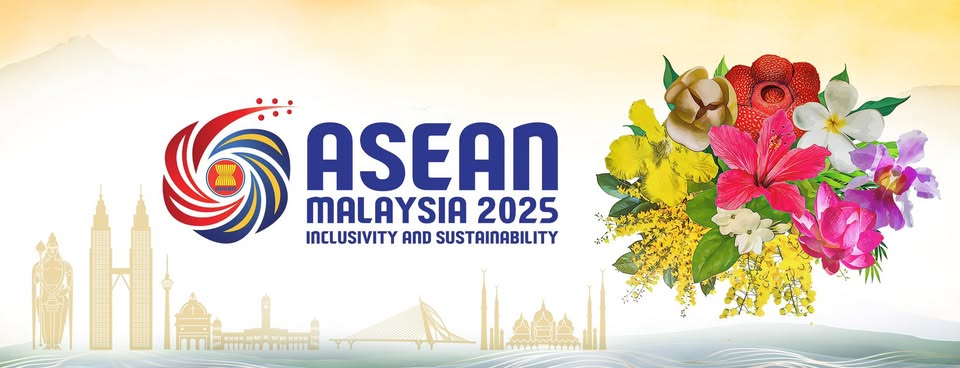
By Dr Mohd Safar Hasim
As border tensions simmer between Thailand and Cambodia, Malaysia’s Prime Minister Anwar Ibrahim has emerged as a discreet but pivotal mediator —reviving Malaysia’s legacy as a regional stabiliser and diplomatic bridge-builder.
In a region often overshadowed by great-power rivalry and domestic volatility, Anwar’s approach reflects a deeper strategic intent: to position Malaysia not just as a participant in ASEAN affairs, but as a shaper of its norms and peace architecture.
The Dispute: A Ceasefire Holding, But Barely
The July ceasefire — brokered with Malaysia’s quiet facilitation — halted deadly clashes near the Preah Vihear and Oddar Meanchey zones. These areas, rich in historical symbolism and strategic terrain, have long been flashpoints between Thai and Cambodian forces.
While the ceasefire technically remains in place, recent accusations from Cambodian Prime Minister Hun Manet — alleging Thai military obstruction of displaced villagers — have reignited fears of escalation.
Thailand’s new Prime Minister, Anutin Charnvirakul, has hardened his stance, granting military commanders final authority over border reopening decisions. Religious sites remain closed, and patrols have intensified—signalling a fragile peace under strain. The situation remains volatile, with both sides wary of political missteps and public backlash.
Malaysia’s Diplomatic Thread
Amid this uncertainty, Anwar’s outreach to both leaders has been firm yet conciliatory. He has emphasised the importance of resolving tensions through the ASEAN Joint Border Committee (JBC) — a bilateral mechanism designed to manage disputes, oversee demarcation, and facilitate technical cooperation. Malaysia’s message is clear: dialogue, not deployment.
Anwar’s diplomatic tone reflects Malaysia’s longstanding commitment to regional stability. By positioning itself as a neutral facilitator, Malaysia reinforces its credibility as a trusted ASEAN partner. This reputation was recently echoed by Russia, which praised Malaysia’s role in promoting peace and cooperation within Southeast Asia.
Strategic Undercurrents
The dispute between Thailand and Cambodia is more than a bilateral spat — it is a litmus test for ASEAN’s capacity to manage internal conflicts. With Thailand undergoing a leadership transition and Cambodia asserting its territorial claims more forcefully, the region faces a delicate balancing act.
Malaysia’s role here is not merely moral — it is strategic. Stability in the Mekong corridor affects trade, migration, and regional energy flows. Border disruptions can derail infrastructure projects, hinder economic integration, and strain diplomatic ties.
Anwar’s diplomacy, therefore, is not just about resolving a dispute—it’s about safeguarding ASEAN’s future.
Moreover, Malaysia’s engagement reflects a broader ambition: to be seen as a norm entrepreneur within ASEAN. By championing peaceful resolution mechanisms like the JBC, Malaysia helps institutionalise dialogue and reduce reliance on ad hoc crisis management.
Strengthening the JBC: A Case for Reform
While the JBC has proven useful in de-escalating tensions, it is not without limitations. Its bilateral nature means it lacks central oversight, binding enforcement, and public transparency. Decisions are slow, consensus-driven, and often buried in confidential minutes.
Technical bottlenecks — ranging from colonial-era maps to GPS disputes — can stall progress for years.
To enhance its effectiveness, several reforms should be considered:
* Neutral Oversight: Introduce a third-party observer — either a neutral ASEAN member or external technical body — to mediate deadlocks and restore trust.
* ASEAN Border Mediation Panel: A standing panel of legal, cartographic, and diplomatic experts could support JBCs during crises and leadership transitions.
* Digital Mapping Integration: Satellite-based and blockchain-verified land registry systems could accelerate demarcation and reduce ambiguity.
* Public Engagement Portal: Publishing non-sensitive updates would build civic trust and counter misinformation in border communities.
* Youth & Civic Toolkits: Educating the next generation on the JBC’s role in peace-building would turn quiet diplomacy into public understanding.
* Infrastructure Alignment: JBCs should coordinate with regional development plans to prevent disputes over land use and strategic corridors.
Who Activates the JBC?
Typically, Ministries of Foreign Affairs or Home Affairs initiate JBC engagement. But in high-stakes disputes, it is often the Prime Ministers themselves who instruct activation — underscoring the JBC’s strategic weight, even if its profile remains low.
In the current standoff, Anwar’s quiet diplomacy has helped revive JBC dialogue, urging both sides to return to formal mechanisms rather than military posturing. Malaysia’s role as a trusted mediator reflects not only its diplomatic maturity but also the latent potential of the JBC when backed by political will.
In an era of shifting borders, climate migration, and infrastructure diplomacy, the JBC deserves more than quiet respect — it needs institutional reinforcement. ASEAN’s stability may well depend on it.
And as Malaysia continues to shape regional norms, it must also champion the tools that make peace possible — not just in principle, but in practice.
(The views expressed here are entirely those of the writer)
WE